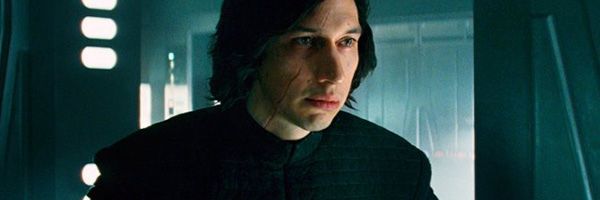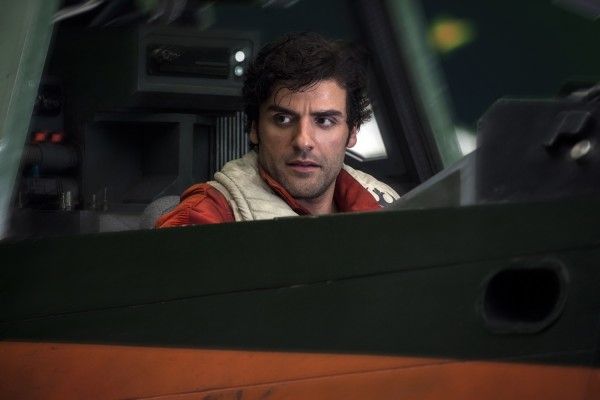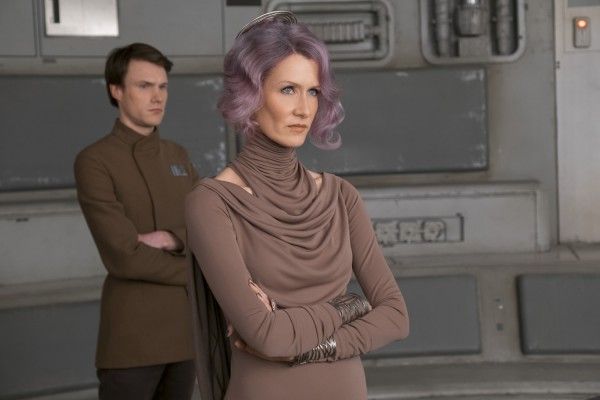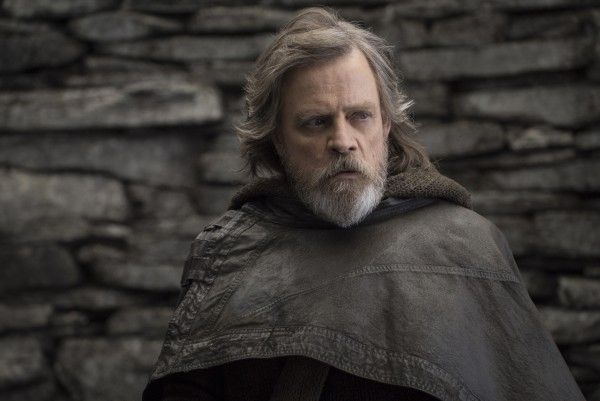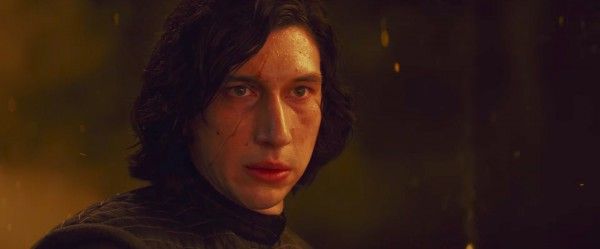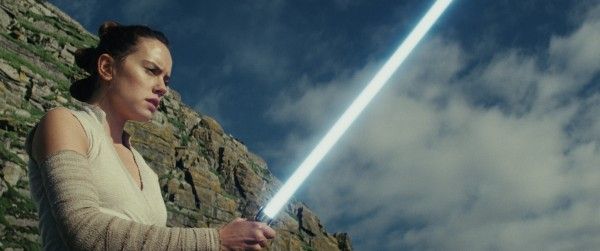Star Wars: The Force Awakens was a reunion; a trip down memory lane. Perhaps necessarily, J.J. Abrams ushered audiences back to a galaxy far, far away swaddled in the comforts of familiar faces, places, and story beats, getting the band back together and playing all the old hits. It's a hoot and a half, but after the initial elation and nostalgia wore off, a shared sentiment seemed to settle in -- the old tricks aren’t quite as magical as they used to be.
Enter Rian Johnson, a filmmaking sorcerer if ever there was one, who takes the franchise baton handed to him by Abrams and runs completely off the tracks, not because he’s lost sight of where he’s supposed to be going or how to get there, but because he’s found entirely more interesting and unexpected routes to that destination. With Star Wars: The Last Jedi, Johnson sidesteps every predictable beat, playing against long-entrenched concepts of what to expect from a Star Wars film, and in doing so, he delivers the most electric, thematically rich, and visually innovative Star Wars since George Lucas redefined blockbuster cinema with his 1977 original.
This is what Johnson does as a filmmaker. Brick was a Noir movie, Looper was a time travel movie, and The Last Jedi is a Star Wars movie, but all of them simultaneously redefine those labels while proudly wearing them. Playing the genres he loves most, Johnson makes singular films. He’s like a cinematic architect, remodeling the space he’s working in without undermining the fundamental structures that make it hold true.
The Last Jedi begins in battle, and Johnson makes his subversive intentions known from the film’s first moments. The film drops us in the middle of a Resistance evacuation. Decimated after the events of The Force Awakens, the rebels are on their last leg and hauling ass to get away from a First Order Dreadnaught. Poe Dameron (Oscar Isaac), the fan favorite Resistance hero and consummate cocky "flyboy", sees an opportunity to take out one of the enemy’s biggest weapons and stages an attack in direct opposition to General Leia’s (Carrie Fisher) orders, but first he gets in some smarmy smartassing at the expense of General Hux (Domhnall Gleeson).
What will prove to be one of the most pensive Star Wars films begins with a laugh. It’s a quippy, kind of goofy scene to open the film, earning big laughs out of all three packed audiences I've seen the film with, and it toes right up to the line of genre parody. But Johnson knows exactly when to pull back, and he follows up the unorthodox humor with an absolutely stunning action sequence that reminds us, yep, this is a Star Wars movie, and it’s a very good one.
Staged with stunning clarity, geography, and vision, the film’s first major set-piece sets the standard for the level of action Johnson will deliver throughout and puts the back “war” in Star Wars. These grand action sequences come with a death toll. The Last Jedi reminds us more elegantly and pointedly than any Star Wars trilogy film before that resistance requires loss, and the film’s first big action moment turns surprisingly somber as faceless X-Wing pilots are replaced with soldiers we quickly care about. When they sacrifice themselves for Poe’s impulsive plan, it stings, and it’s just the beginning of the film's fallout from foolhardy heroics.
The rebels take out the dreadnaught, but their entire bombing fleet is lost in the process, and when their escape jump reveals that the First Order can somehow track them through lightspeed, the stakes become even direr. Poe is demoted, a First Order attack claims the life of Admiral Ackbar and puts Leia in a coma (more on that in a minute), and Poe finds himself under the command of the inscrutable Vice Admiral Holdo (Laura Dern) as a slow-paced space-chase sends the out-gunned, under-fuelled rebellion on an escape from a pursuant they can never truly outrun.
These first scenes are a showcase for Johnson's inventive approach to the material, and they encapsulate the themes he wants to explore with The Last Jedi: the myth of heroism and the lessons of failure. Those themes carry through into every sequence that follows, including the (again) foolhardy plan concocted by Poe, Finn (John Boyega) and Rose (Kelly Marie Tran), that leads to an adventure on the gambling planet Canto Bight and an ill-advised mutiny on the Resistance cruiser. Their journey inverts the standard hero arc. Where we traditionally follow renegade heroes headfirst into ill-advised battle ("never tell me the odds") where they save the day, these mavericks fail. And they keep failing until they learn from it.
The same themes are at work in the dynamic between Rey, Luke and Kylo Ren, which unfolds on Ach-To, where Luke Skywalker (Mark Hamill) has retreated to disappear and die after his failure as a mentor led Ben Solo (Adam Driver) to the dark side. This is where we pick up with our intrepid heroine Rey (Daisy Ridley); after traversing the galaxy to find Luke, she expectantly hands him his old lightsaber, demanding he return to the resistance and save the day. Luke promptly throws the lightsaber over a cliff with a sneer and insists that the Jedi must end; a definitive statement from Johnson about expectations. This is not the Luke Skywalker we knew, and after all these decades and the loss of his training temple, that feels right.
Despite his reservations and his insistence that the age of Jedi is over, Luke agrees to provide Rey with a few key lessons in the Force in order to show her that it belongs to no one, and it's here that we see most clearly; this is not the Luke Skywalker we all know and love. Something in him has been broken and the impulse for goodness in him has not been lost, but it has retreated, leaving behind the grey, withered, and angry shell of a once great man. Again, Johnson strikes down the mythology of heroes. Outright, he rejects the construct of the "chosen one," and through Luke's interactions with Rey, and in contrast, through her insistence on doing good despite her attraction to the Dark Side, Johnson enforces that heroism is not in the legend or the bloodline, it's in the doing and determination to do right.
Because there's another chosen one, the young Kylo Ren née Ben Solo, cultivated by Supreme Leader Snoke (Andy Serkis) to become the next Vader. He has the bloodline, he is strong with the force, but when he murdered his father in The Force Awakens, he split his soul. He no longer clings to the legacy of his past in his quest for power. Long gone are they days when he called out to his grandfather for guidance. Now, he wants to kill the past. Not to learn from it, but to burn it all down. When Kylo and Rey begin communicating through the Force, sharing time out of space, he is once again presented with the opportunity for redemption. Once again, he's given a choice.
The connection between Kylo and Rey demonstrated one of Johnson's most exciting innovations in the world of Star Wars. He delights in expanding the vocabulary of the Force and discovering new ways to integrate the Force into the format of his storytelling. While this might inspire Han-like growls of "That's not how the force works!" from purists, I find it to be a thrilling and welcome piece of world-building that's completely in line with how the Force was explored in the original trilogy. The Force evolved with each film, new surprises around every corner; mind tricks, Force chokes, Force ghosts, we didn't learn it all at once. The Force existed as a powerful, mystical element that courted the imagination. That's why Johnson's expansions ring true. And yes, I put so-called "Space Leia" under that umbrella. We've been waiting for the payoff to Leia's Force sensitivity since she psychically communicated with Luke back in the OT, and it's just so very Leia to finally use that ability in a moment where it's truly needed so she can get back to the Resistance and get back to work.
But the Force connection between Kylo and Rey marries story and format in a particularly lovely way. They believe their bond is something special, forging Star Wars' sexiest forbidden romance and setting the stage for one of them to turn sides. With Snoke's visions in their heads, they expect it as much as we do and Rey leaves the safety of Ach-To so she can bring Ren to the Light. "This is not going to go the way you think," warns Luke. Indeed.
Johnson uses visual cues to misdirect the audience throughout The Last Jedi, playing with familiar sights as a sleight of hand, the best of which unfolds as Ren escorts a shackled Rey to Snoke's throne room -- a direct callback to the moments before Darth Vader's redemption in Return of the Jedi. But no, this does not go the way we think. Johnson gives us a glorious sequence of hope when Ren kills Snoke with a single stroke and joins Rey in an exquisite battle against the Praetorian Guard. There’s so much emotional power packed into that moment and the gorgeous, cinematic fight scene that follows. It’s an instant all-timer light saber battle; elegant choreography, powerful performance, stunning cinematography. And most of all, it's a charged intersection of narrative and story; a twist, an emotional payoff, and a badass, beautiful fight scene. Which is what makes it so heartbreaking when Ren does not turn, but solidifies his place as the new Supreme Leader, a wounded man who wants to burn it all down and start a new world where he's on top.
In a testament to what a fantastic villain Kylo Ren is shaping up to be, it's all too easy to see his point. His Jedi mentor, the legendary Luke Skywalker betrayed him. His Supreme Leader proved weak and disappointing. And as Benicio Del Toro's slippery code-breaker constantly reminds us; the war between the Light and the Dark is an endless enterprise. Is there a part of me that want to see Rey take Ren’s hand and build something truly new. To” kill the past,” as Kylo advises, and let the wars of an aging generation die out? Of course there is. Together, they are a force all their own to behold. Look at the way they fight together, it’s like poetry; their power and their pairing is an ebb and flow of light and dark, a primal pull towards each other’s power and the knowledge that they might be the one other person with whom they can be understood and truly belong. It's powerful stuff.
So yes, there's an urge to stay there in that moment of unbridled kinetic, romantic, emotional payoff, but that would be violating the structures that make the house stand. It would ask us to accept a man who murdered his own father, one of the most beloved characters in cinema history -- a man who killed a class of Jedi, who’s comfortable with genocide, to be our hero. It would demand that Rey abandon her moral code along with us, allowing her friends to die on those transports. Johnson steers the film in a wiser, less indulgent direction. Then he drops the parents bomb.
After all this buildup, who are Rey's parents? They're no one. Junk traders. Sold her for drinking money. She is not a hero because of her bloodline. She's not a hero because it was her destiny or because she is some chosen one. She is a hero because of her actions, because of that inextinguishable spark of hope that made her too deadly to live, even to a creature as powerful as Snoke. She's a hero because she chooses to be and she refuses to choose anything else. Ren becomes the villain because he lets his weakness guide him. He has a choice too, and his choice breaks your heart.
It's understandable why this will frustrate some viewers who spent the last two years speculating and theorizing. But expectations do not define the quality of the film they're applied to, and I'd argue the fault lies more with Abrams, who built a mystery box he never had any intention of solving. Johnson's not interested in the mystery box; he doesn't care about Snoke or Rey's linneage, he cares about Kylo and Rey and the much more interesting dance between light and dark swirling between them. He's interested in a cohesive thematic work that builds the mythology outward rather than an infinitely inward-looking reiteration of the Skywalker saga. Johnson understands that Darth Vader’s secret identity may have become one of the most enduring legacies of the original trilogy, but it's not why we fell in love with Star Wars. We fell in love with heroes and adventure, and a wondrous world that is always expanding and evolving.
He drives it home in the third act, which pits all our heroes, reunited on the stunning red and white shores of Crait, against an utterly unhinged Ren. Johnson subverts our expectations with one last grand gesture, Luke's self-sacrifice. He returns to the fold and saves the day, and it might not be the grand lightsaber battle between master and apprentice you were expecting, but it that honors the path his character has taken. A man who wants to do no more harm. He went to Ach-To to die, and die he does, but not before one great pacifistic stand against the monster he helped create. Instead of running from his failure, he learns from it, as Yoda so wisely suggested in his delightfully kooky return. He confronts it. His fight with Ren gives the Resistance the distraction they need to escape and fight another day, and Poe Dameron, having learned his lessons, is wise enough to pick up on it. Johnson gives almost every character an arc of transformation that investigates hope and what it means to be a hero.
Johnson's thematic consistency keeps The Last Jedi afloat even when pacing stumbles a bit. This is a movie with something to say. It wants to give you more than a blockbuster trip around the galaxy. It wants to give you hope. Through all the mythic deconstruction and narrative subversion, The Last Jedi is focused on kindling the spark of hope above all. As our heroes soar away in the Millenium Falcon, the remains of the Resistance tucked away on one small ship, the slave boys on Canto Bight are inspired by the tales of Luke Skywalker's last stand. One of those boys, a "nobody" to be sure, grabs his broom with the Force and gets back to work. He looks at the Resistance ring Rose gave him, looks toward the stars, and tilts his broom up like a lightsaber; a hero in the making, full of hope. The Force is with him, the Force is with everyone, and that includes you.
Rating: A-

